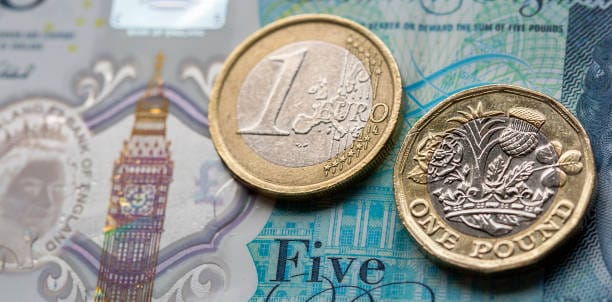GBP/EUR exchange rate May review: pound strikes three-and-a-half month high against euro
The pound marched steadily higher against the euro in May before posting a 14-week high on the back of political and economic tailwinds.

7 May
Following a subdued start to the month, the pound euro (GBP/EUR) exchange rate struck a 13-day low around 1.162 in the wake of mixed Eurozone data prints. An unexpected drop in German factory orders dented the single currency before its losses were capped by rising German exports and better-than-forecast retail sales across the bloc.
8 May
The pound euro pair slipped to a two-week low, a fraction above 1.16, after better-than-forecast German industrial production figures buoyed the euro.
9 May
The pound was muted after the Bank of England (BoE) maintained interest rates at 5.25%, a sixteen-year high. However, the accompanying policy meeting report revealed a dovish tilt to the vote, with two Monetary Policy Committee members voting for an immediate cut, which could signal imminent policy loosening.
14 May
The pound was undermined by rising UK unemployment in March, with the jobless rate edging up from 4.2% to 4.3%, an eight-month high. The underwhelming print stoked market speculation that the BoE will cut interest rates in June, sapping pound sentiment in the process.
16 May
The pound euro exchange rate firmed to an eight-day high in the 1.16 mid-range, before advancing to 1.168 against a backdrop of dovish chatter from European Central Bank (ECB) policymakers that led investors to dial up June rate cut bets, denting the euro.
20 May
The pound consolidated at a two-week high just below 1.17, shrugging off dovish comments from BoE Deputy Governor Ben Broadbent, who said: “it’s possible the Bank Rate could be cut sometime over the summer.”
22 May
Hotter-than-expected UK inflation data that dampened hopes of a June rate cut was followed by the PM's shock election announcement. This combined to lift the pound euro exchange rate to a 14-week high in the 1.17 mid-range.
Despite cooling to its lowest level for almost three years, inflation eased less than expected, leaving it further above the BoE’s 2% target than expected.
Contact a currency specialist to discover how they can help you take control of exchange rates.
23 May
The pound ticked up to a fresh three-and-a-half month high against the euro before arresting its gains after the UK’s service sector PMI posted a six-month low of 52.9. The reading indicated that inflation in the powerhouse sector is easing. If this trend continues, the BoE may be able to start unwinding interest rates this summer, a prospect that created headwinds for the pound.
24 May
The pound was undermined by falling UK retail sales, which fell much more than expected in April as wet weather put shoppers off heading to the high street. The volume of goods purchased dropped 2.3% between March and April following a slight contraction the previous month. Economists had forecast a 0.4% decline.
28 May
The pound was muted just shy of a multi-month high, despite robust UK retail data, before retreating to 1.174. Sales accelerated in May according to the closely watched Distributive Trades Survey from the CBI, as selling price inflation continued to ease.
31 May
The pound euro rate tumbled towards 1.17 following a higher-than-expected Eurozone inflation print. The annual rate of inflation increased to 2.6%, up from 2.4% in April and higher than the 2.5% forecast. Rising consumer prices dimmed the ECB’s rate cut aspirations, creating tailwinds for the single currency.
The pair ended the month at 1.173.
Looking ahead
With the UK’s headline rate of inflation cooling less in April than many had forecast, most economists are now ruling out a BoE interest rate cut at the central banks’ next policy meeting on 20 June – a hawkish stance that could buoy the pound. Despite this, rate-setter rhetoric has become increasingly dovish in recent weeks.
The ECB is limbering up to become the first major central bank to cut interest rates this year at its next policy meeting on 6 June. If this has been priced into the market, downward pressure on the euro will be limited. With a rate cut widely expected, the debate has pivoted to subsequent moves, with investors currently betting on just one more this year, which could cap any euro losses.
